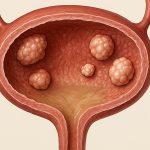Kidney stones – those small, hard deposits forming in the kidneys – are notoriously painful. For many, the image conjured is one of agonizing back and side pain, leading to emergency room visits and a significant disruption to daily life. But beyond the shared discomfort, do kidney stones affect men and women differently? The answer isn’t simply yes or no. While the fundamental formation of kidney stones relies on similar biological mechanisms for both sexes, there are demonstrable differences in their prevalence, type, location within the urinary tract, and even how they present clinically. Understanding these distinctions is crucial not only for accurate diagnosis but also for tailoring preventative strategies and treatment plans to optimize outcomes.
This article will delve into the nuances of kidney stone disease as it manifests differently in men and women. We’ll explore why these differences exist – looking at hormonal influences, anatomical variations, and lifestyle factors – and how healthcare providers are adapting their approach to address the unique needs of each gender. It’s important to remember that this information is for general knowledge only and should not be substituted for professional medical advice; always consult with a qualified healthcare provider for any health concerns or before making any decisions related to your health or treatment.
Gender-Specific Prevalence and Stone Composition
The overall incidence of kidney stones has been increasing globally, but the rates differ substantially between men and women. Historically, men have experienced significantly higher rates of kidney stone formation compared to women. Estimates suggest that men are about twice as likely to develop kidney stones than women over their lifetime. However, this gap appears to be narrowing in recent years, potentially due to changes in lifestyle factors like diet and hydration habits among women, as well as increased awareness leading to better diagnosis. It’s also important to note regional variations; some studies show the disparity is greater in certain geographic locations.
Beyond prevalence, the composition of kidney stones also differs between men and women. Calcium oxalate stones are the most common type for both genders, but men tend to form them more frequently. Women are more prone to developing struvite stones – often linked to urinary tract infections (UTIs) which are more prevalent in women – and uric acid stones, potentially related to hormonal changes during menopause or dietary factors. This difference in stone composition impacts treatment strategies; for instance, medications used to reduce uric acid levels will be more relevant for women predisposed to these types of stones.
Furthermore, the location of stone formation can vary. Men tend to have stones forming higher up in the urinary tract – within the kidney itself or ureter closer to the kidney – while women are more likely to experience stones lower down, nearer the bladder. This anatomical difference influences how symptoms present and may affect treatment options such as lithotripsy (shock wave therapy).
Anatomical and Hormonal Influences
A key factor explaining these gender differences lies in anatomical variations within the urinary tract. Men generally have narrower urethras compared to women, potentially leading to increased pressure and difficulty passing stones – hence, a higher likelihood of stone formation higher up. Women’s wider urethra may allow smaller stones to pass more easily, but also predisposes them to UTIs, which in turn increase the risk of struvite stone development.
Hormonal fluctuations play a substantial role too. Estrogen levels impact calcium metabolism and urine pH; changes during menstruation, pregnancy, and menopause can influence kidney stone formation in women. Specifically, lower estrogen levels post-menopause are associated with increased urinary calcium excretion, potentially contributing to the development of calcium oxalate stones. Testosterone in men also influences metabolic processes that could affect stone risk, though the exact mechanisms are still being researched.
Dietary habits, often influenced by societal expectations and cultural norms relating to gender, contribute as well. Studies have shown differences in fluid intake, sodium consumption, and protein levels between men and women, all of which can impact kidney stone formation. For example, diets high in animal protein – historically more common for men – increase uric acid production, raising the risk of uric acid stones.
Diagnostic Challenges and Treatment Approaches
Diagnosing kidney stones can sometimes be challenging, especially in women. Symptoms like back pain or abdominal discomfort are often non-specific and could indicate other conditions. Additionally, pregnancy presents a unique diagnostic hurdle as standard imaging techniques like CT scans are avoided due to radiation exposure. Ultrasound is frequently used instead, but may not always detect small stones effectively. This can lead to delayed diagnosis and potential complications.
Treatment approaches also need to be tailored based on gender. While extracorporeal shock wave lithotripsy (ESWL) remains a common method for breaking up kidney stones, men often require higher energy levels due to their anatomy. Ureteroscopy – using a small scope to remove or break up the stone – may be preferred in women due to the wider urethra and reduced risk of complications.
It’s crucial that treatment plans incorporate preventative measures too. This includes advising patients on adequate hydration (aiming for pale yellow urine), dietary modifications tailored to their stone type, and addressing underlying medical conditions like hyperparathyroidism or gout. For women experiencing recurrent struvite stones, managing UTIs is paramount.
The Evolving Landscape of Kidney Stone Prevention
Preventing kidney stones requires a holistic approach that considers individual risk factors and gender-specific nuances. General recommendations include increasing fluid intake (at least 2-3 liters per day), reducing sodium consumption, limiting animal protein intake, and maintaining a healthy weight. However, more personalized strategies are emerging. For example, thiazide diuretics can help reduce calcium excretion in urine for individuals prone to calcium oxalate stones – but their use must be carefully monitored considering potential side effects.
Recent research focuses on identifying genetic predispositions to kidney stone formation, which could allow for earlier intervention and targeted prevention strategies. Furthermore, advancements in dietary analysis are helping healthcare professionals provide more tailored advice based on a patient’s specific eating habits.
The trend towards gender-specific preventative guidelines is also gaining traction. For women post-menopause, hormone replacement therapy (HRT) may play a role in managing calcium metabolism and reducing stone risk – though this remains a complex topic requiring careful evaluation by a healthcare professional. Ultimately, the key to effective kidney stone prevention lies in understanding individual risk factors and adopting a proactive approach that addresses both lifestyle and underlying medical conditions.





















